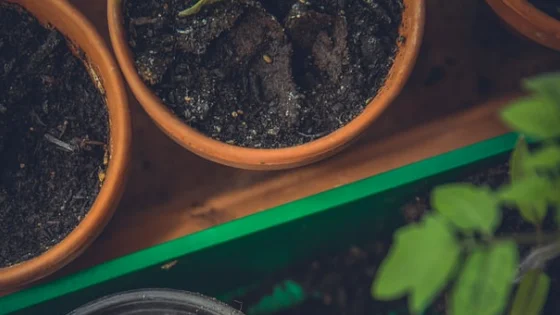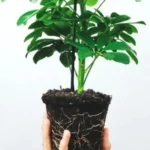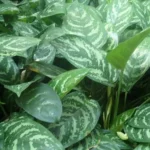Table of Contents
How To Propagate Pilea Peperomiodes
Pilea Peperomioides, commonly known as the Chinese money plant, is a houseplant known for its medicinal properties. As an erect plant that requires little maintenance, its ideal growing season spans from spring to fall.
Most people grow it as a houseplant for its visually appealing coined-shaped leaves, measuring up to 4 inches in diameter. The plant has its roots in China’s George Forest, which surrounds Cangsgan mountain (with altitudes ranging from 5,000 to 10,000 feet.
With the easy-to-follow tips discussed in this guide, you can get yourself started with pilea propagation.
Overview
As a succulent, evergreen, and perennial plant, the Pilea Peperomioides grows up to 12 inches in height with the ability to expand its width. The plant thrives in temperate and tropical regions across the globe.
It is part of the Urticaceae family, which includes about 600 to 715 flowering plants mostly grown as houseplants.
Conditions Required to Propagate Pileas
Since they require minimal watering, pilea plants can thrive and continuously grow new leaves in hot months.
When the cold months approach, their growth significantly slows down. It’s advisable to propagate the plant in containers before the spring season reaches. All you need for pilea propagation is the stem cuttings.
With relatively brittle stems, pileas are easy to propagate. Use the tips of new branches when propagating for a more compact, bushy plant. Observe the following conditions for the cuttings to thrive:
Soil
Use a moderately rich, well-draining mix to propagate your pilea cuttings. A mix designed for African violets or a pear moss potting mix combined with perlite and leaf mold may be ideal. Soggy soil may lead to root decay and kill the cuttings.
Light
Bright, indirect light is ideal for pilea propagation. The cuttings may burn and wither when exposed to direct sunlight. Rotate the container twice or thrice a week to allow the shoots to receive adequate light.
Though the plant can survive under dimly-lit conditions, its foliage may become leggy and turn a darker green.
Temperature and Humidity
Pilea plants grow well in temperatures above 50 degrees Fahrenheit. Since Frost is detrimental to the plant, the indoor temperatures for pilea propagation should range from 65 to 75 degrees Fahrenheit.
Grow the cuttings away from the vents, which tend to blow hot or cold air. Pileas thrive in moderate to high humidity conditions.
Water
Water the plants when the first inch of the potting mix completely dries out. If the leaves start dropping, it may be a sign that the plants require watering. Water more often in hot weather since the soil tends to lose moisture faster.
Though watering isn’t necessary during winter, you should always check signs of moisture loss in the soil.
Overwatering may weaken the stems or make the plant droop. These signs may also show when the soil completely lacks water.
Aerate the soil before watering to allow it to breathe and make it easier for moisture to evaporate. Loosen up the soil particles using a stick as a way of aerating them.
Fertilizer
You won’t need fertilizer when propagating pileas outdoors. However, you have to propagate them in the ideal growing zones for this exception to work in your favor.
Use a specialized liquid fertilizer when propagating the cuttings in containers. Apply the compound at half strength and mix it correctly with the soil.
Propagating Pileas
Besides knowing the conditions for pilea propagation, it’s also important to understand the different pilea varieties. These varieties differ based on the size and shape of the leaves and their ability to spread. They include:
- Pilea Microphylla – Also known as gunpowder plant, artillery plant, or rockweed, this plant features light green foliage with relatively tiny leaves.
- Pilea Mollis – Also known as the “moon valley pilea,” this variety features sawtooth-edged chartreuse leaves. Their leaves have a deep texture that resembles the valleys and craters on the moon.
- Pilea Nummularifolia (also known as creeping Charlie) – This pilea variety spreads fast and has medicinal benefits.
- Pilea Cadierei – Commonly known as watermelon pilea or the aluminum plant, this variety has dark green, oval-shaped leaves with silver patches that give it a metallic look.
- Pilea Peperomiodes – The Chinese money plant has round, coin-shaped, and dark green leaves on erect stems.
Step-by-step Procedure
- Locate Small Offsets
You’ll need small offsets for pilea propagation. Locate them at the base of the houseplant or below the central stalk.
If you can’t find any, give the plant some time to grow them. It usually takes two to three weeks for new offsets to sprout up from the base.
- Cut an Offset from the Base
Once you locate the offsets, use a sterile blade to cut them at the base. Contaminated razors may transfer disease-causing organisms to the mother plant, leaving it vulnerable to withering or dying.
Leave the mother plant with at least two offsets. If the blade gets stained, sanitize it before using it again.
- Place the Cuttings in Water
Immerse the cuttings in a jar or glass of water after extracting them from the mother plant. Place the shoot or stem in water leaving the leaves to hang freely in the air. Leaves tend to rot when submerged in water.
- Give the Offsets Adequate Time to Grow
Store the submerged offsets in an area with indirect bright light. Changing the positioning twice or thrice a week will help keep it fresh and the roots will start to sprout after two weeks.
- Transfer the Plants in a Small Pot
Please wait until the plants’ roots grow to about an inch in length before transferring them to a small pot.
The pot should have fresh well-draining soil to support the young plants. Water the soil for a few weeks until shoots start appearing.
The Bottom Line
Since they’re easy and quick to propagate, pileas are a great addition to every office or home. You’ll need a place with indirect bright light and well-draining potting soil for pilea propagation.
It’s also important to water the young plants moderately to avoid root rot. Keep fully grown pilea plants from small children and pets to avoid poisoning.
Photo by Markus Spiske on Unsplash



